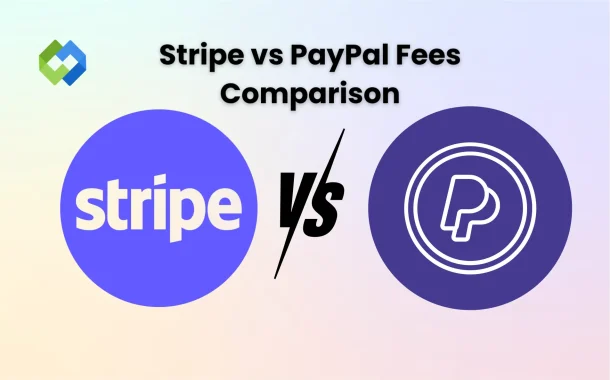It explains the types of fees, like transaction, currency conversion, and chargebacks. You’ll also see a side-by-side table that makes it easy to understand which platform is cheaper in different situations. Whether you get paid locally or from other countries, this guide will help you know which service fits your needs best.
Table of Contents
Table of Contents
Types of Fees Explained
Transaction Fees
This is a basic fee taken from every payment you receive. Stripe and PayPal usually charge a percentage of the total plus a small fixed amount. It applies to both local and international payments. These charges affect your earnings on each sale or service.
Currency Conversion Fees
If someone pays you in a different currency, the platform will convert it for you. But they charge a fee for that. The rate is often higher than market rates. This is important for people working with overseas clients.
Chargeback Fees
A chargeback happens when a customer disputes a payment. You may have to pay a fee even if you prove you’re right. These fees can be costly and are common in online sales or services. It’s important to handle disputes carefully.
Withdrawal Fees
When you move money from your PayPal or Stripe account to your bank, there might be a fee. Some platforms offer free standard transfers but charge for instant ones. These fees can vary based on your country and method of transfer.
Hidden or Extra Charges
There are other small charges that may not be obvious at first. These include fees for using certain cards, instant payouts, or special features. Reading the full fee policy can help you avoid these unexpected costs.
Stripe Fees Breakdown
Domestic Payment Fees
Stripe charges 2.9% + 30¢ per successful card payment for most domestic transactions. This is the average rate in countries like the US. If you charge $100, Stripe takes around $3.20. Rates may be slightly different based on your country or account type.
International Payment Fees
For payments made with cards issued outside your country, Stripe adds a 1.5% international fee. If currency conversion is needed, an additional 1% fee applies. So in total, you may pay around 4.4% + 30¢. On a $100 payment, that’s around $4.70 in fees.
Card and Wallet Payment Fees
Stripe supports Visa, Mastercard, American Express, Apple Pay, Google Pay, and others. Most follow the same fee of 2.9% + 30¢. American Express may cost slightly more, around 3.4% + 30¢, depending on your country.
Chargeback and Refund Costs
Stripe charges a $15 fee per chargeback. If you win the dispute, Stripe may return this fee. Refunds don’t return the original 2.9% + 30¢, so you lose that amount even if the payment is refunded. On a $100 refund, you’d lose around $3.20.
PayPal Fees Breakdown
Domestic Transaction Fees
For sales within the same country, PayPal usually charges 2.99% + a fixed fee based on the currency (e.g., $0.49 in USD). So, for a $100 sale, you pay about $3.48 in fees. This applies to personal and business accounts for most standard payments.
International Transaction Fees
If you receive money from someone in another country, PayPal charges a 4.4% fee + a fixed fee. On a $100 payment, that’s about $4.89 or more, depending on the country. Currency conversion adds another 3–4%, which increases the total cost further.
PayPal Business and Personal Account Differences
Business accounts are designed for sellers and come with features like invoicing and checkout tools. The fees are the same as personal accounts for most transactions, but micropayments or donations may have special rates. Always check your PayPal account settings for exact pricing.
Other Service Charges
PayPal may charge extra for things like instant transfers to your bank (around 1.75%, up to a max of $25), chargebacks ($20), and currency conversions (3–4% above the base rate). These add to your overall cost if used often.
Which Platform Is Cheaper for International Payments
When it comes to international payments, Stripe is usually cheaper than PayPal. Stripe charges a 1.5% international fee, plus a 1% currency conversion fee, totaling around 2.9% + 30¢ + 2.5%. So on a $100 payment, you might pay about $5.70.
PayPal charges more for the same. Its international fee is 4.4% + a fixed fee, and currency conversion adds another 3–4%. This means you could pay $7 to $8 in total for receiving a $100 international payment.
If you work with global clients regularly, Stripe will likely save you more money. It also provides clearer fee breakdowns and competitive conversion rates. On the other hand, PayPal is easier for some users who just want quick payments without worrying about setup. But overall, for lower international fees, Stripe wins.
Which Platform Is Better for Freelancers and Small Businesses
Stripe usually costs less for both local and international payments. For local payments, Stripe charges around 2.9% + 30¢, so on $100, the fee is about $3.20. For international payments, it adds a 1.5% international fee and 1% currency conversion, making the total around $5.70 on $100. Stripe also gives more control, custom checkout, and easy website integration. It’s a good choice for growing businesses and freelancers with global clients.
PayPal is simple to use and trusted by many clients. For local payments, it charges around 2.99% + 49¢, so you pay about $3.48 on $100. But international payments can cost more, around $7–$8, including currency conversion. If your work is mostly local and you want quick setup, PayPal works fine. But if you want to save more on fees and grow online, Stripe is the better option overall.
Conclusion
Stripe and PayPal both help you receive payments online. But their fees are different. Stripe is cheaper for international payments. It also offers better tools for growing businesses. PayPal is easy to use and popular with many clients.
If you want to save more on fees, especially from global clients, go with Stripe. If you want something simple and fast to set up, PayPal works well. Check your business needs before choosing. Both platforms are good, but one may suit your work better than the other.














